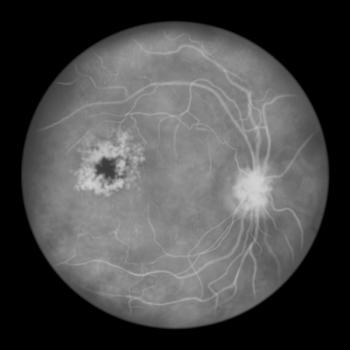Pharmacy careers traditionally revolve around retail or hospital settings, where pharmacists play a vital role in patient care by ensuring safe and appropriate medication use; however, as the health care landscape evolves, many pharmacists are exploring nontraditional roles within the industry. Among these emerging opportunities, market access stands out as a dynamic and impactful career path, allowing pharmacists to leverage their expertise in new ways to support patient access to medications.
What is Market Access?
Market access refers to the strategic process pharmaceutical manufacturers use to ensure that patients can obtain access to medical products.1 This process engages multiple stakeholders—such as patients, health care providers, and payers—to achieve a common goal: getting the right medication to the right patient at the right time and at an affordable price. Many of these principles resonate with pharmacists who are experienced in managing medication safety and optimizing patient outcomes.2
An effective market access strategy depends on several core components, including the following:
- Comprehensive market and payer research: Examining the market landscape and trends, which may include competitors, patient demographics, disease characteristics, and unmet needs
- Health Economics and Outcomes Research (HEOR): Generating data on affordability and economic value, health outcomes, cost offsets, and societal impact
- Pricing and reimbursement: Establishing a value-driven, competitive price and negotiating with payers to secure formulary inclusion and reimbursement
- Value proposition development: Developing a compelling value story that highlights the unique attributes of the product (eg, efficacy, safety, mechanism of action, formulation) over competitor therapies or the current standard of care
- Stakeholder engagement: Fostering and maintaining strong relationships with key stakeholders (eg, payers, providers, patients)
- Integrated marketing communications: Developing a cohesive communication strategy to reach all stakeholders
Market access teams may be in-house or outsourced to consultants, but their overarching goal remains the same: to obtain policy coverage (commercial, Medicare, or Medicaid), formulary acceptance, and reimbursement upon FDA approval, and ensure that patients have affordable access to the medication.
The Role of Market Access in Drug Development
Market access plays a significant role in the drug development cycle, particularly as a product approaches market authorization (typically in phases 2 or 3) and continues through post approval and patent expiration as shown in the Figure.1-3 Market access teams work diligently to secure coverage on payer formularies, ensuring the product is available to the patients who need it most.
Without proper market access strategies, a product—no matter how innovative, effective, or medically necessary for the patient—may fail to reach those who need it most, even if the provider is eager to prescribe it. This can result in lost revenue for the manufacturer and, more importantly, missed opportunities to treat patients and improve health outcomes.
Affordability and Access
Beyond ensuring patient access to necessary medications, market access also addresses affordability strategies. Pharmaceutical companies invest significant effort to ensure newer medications are financially accessible to patients. This process includes pricing and reimbursement negotiations with payers, planning for formulary acceptance through value-based presentations, and offering patient assistance programs and coupons. Additionally, companies provide educational resources to raise awareness among health care providers, patients, and payers, particularly for rare diseases.
Value Proposition and Evidence Generation
Creating a strong value proposition for a medical product is a key component of market access strategy.3 This goes beyond demonstrating clinical efficacy and safety; it involves communicating the product’s unique benefits to all stakeholders using clinical trial and real-world evidence, health-economic studies, and other evidence-based data. The product’s unique benefits may include improved quality of life, reduced health care resource utilization, economic value, data on real-world application of the product, and addressing an unmet need for the disease.
HEOR is a specialized area that generates supporting evidence to facilitate market entry, strengthen a product’s value proposition, and increase payer willingness to cover, pay for, and reimburse them the product. Without strong supporting economic and real-world patient outcomes evidence, a product may face significant barriers to access.
Career Paths in Market Access Within Pharma
Pharmacists interested in market access have several career paths to consider, which may include the following:
- Medical affairs
- Managed care liaison: Communicates directly with payers, presenting product data and negotiating formulary inclusion to ensure coverage
- HEOR staff: Generates evidence that demonstrates the value of a product, including cost-effectiveness analyses, quality-adjusted life years, and budget impact models
- Medical communications personnel: Develops evidence-based messaging about the product’s clinical value and economic benefits
- Commercial/market access
- Market access marketing or product manager: Drives the development and success of new products by creating data-driven market strategies and managing pricing and negotiations with health care stakeholders, ensuring smooth market entry and long-term product success
- Market access account manager: Ensures product accessibility by negotiating contracts, securing a formulary placement, and building relationships with key stakeholders. They communicate the product’s value and implement strategies to drive patient access and adherence
- Consulting agency: Offers market access expertise to pharmaceutical companies and payers, assisting with reimbursement strategies, patient services, provider education, market insights, and value strategy
There are numerous career paths in market access to consider, with job titles and responsibilities varying widely across organizations, tailored to each company’s objectives and the specific needs of the health care system in which it operates.
Transferable Skills
Pharmacists possess many skills that are highly transferable to market access roles. In addition to clinical expertise, these skills include attention to detail, regulatory knowledge, cross-functional collaboration, informed decision-making, strong communication abilities, and experience in a pharmacy and therapeutics committee and formulary management. Pharmacists are also adept at understanding patients’ unmet needs and evaluating their willingness to pay for medications out of pocket. These traits make pharmacists well suited for careers in market access.
About the Author
Jessica Benitez-Burke, PharmD, is a medical affairs and HEOR fellow at Coeus, a boutique market access consulting firm, and an alumna of the University of Illinois Chicago Retzky College of Pharmacy. She specializes in payer communications and value-based insights for rare and orphan medical products, supporting strategic market access planning for complex diseases.
Sabrina Lin, PharmD, is a clinical associate affiliated with Coeus, where she combines her pharmaceutical expertise with data-driven insights to enhance strategic decision-making. With a focus on market access, she is dedicated to navigating complex health landscapes to ensure that innovative therapies reach the patients who need them most.
Conclusion
Pharmacists have a wide array of career options beyond traditional roles, with market access within the biopharmaceutical industry representing one of the most dynamic opportunities. It allows pharmacists to apply their expertise in new ways, collaborate across sectors, and make a significant impact on patient care. Market access offers a challenging and rewarding career path for those looking to grow in a different direction while continuing to leverage their pharmaceutical knowledge.
REFERENCES
1. Fatoye C, Yeowell G, Miller E, Odeyemi I, Mbada C. Conceptualisation and role of market access in pharmaceutical industry: a scoping review. J Mark Access Health Policy. 2024;12(2):81-99. doi:10.3390/jmahp12020007
2. Quinn C. Staff augmentation: market access accountservices for small to mid-size manufacturers. Coeus. Accessed October 1, 2024. https://1coeus.com/media/downloads/COEUS_Issue-Brief_Staff-Augmentation.pdf
3. Market access fundamentals. Rx Communications. January 1, 2024. Accessed October 1, 2024. https://www.rxcomms.com/learning/guide-to-market-access-fund



























































































































































































































